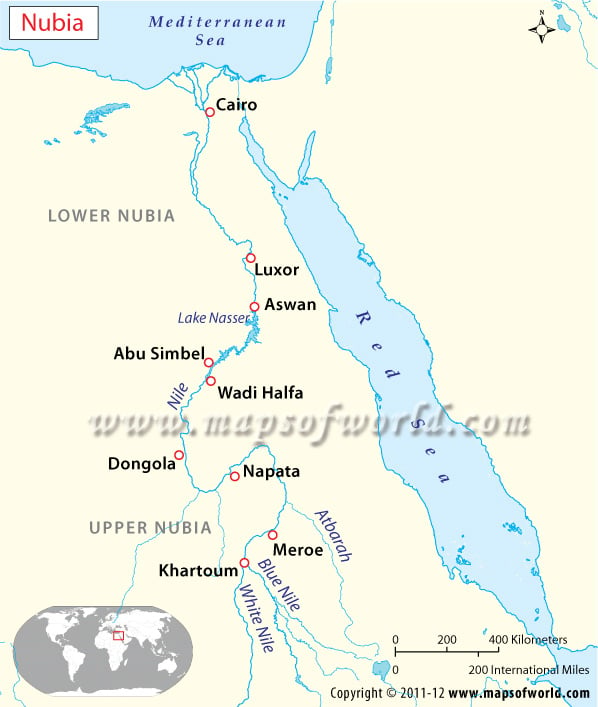In around 2000 BC, an ancient and rich civilization emerged in the land of Nubia. Nubia covered most of Sudan and parts of southern Egypt. The antiquity of the Nubian Civilization is as old as the Egyptian Civilization itself.
The early Egyptian pharaohs considered the Nubians formidable enemies and vied with the Nubians for control of the Nile. The Nubians were important trade associates for the Egyptians.
Culture in Ancient Nubia
Nubia was a land rich in gold – so much so that it is believed that the name Nubia has its origins in nub, an Egyptian word meaning gold. Nubian artisans and goldsmiths were extremely skilled and crafted intricate jewelry. The ceramic works of the Nubians captured the attention of all the civilizations that came in contact with them. The architecture of ancient Nubia, as evidenced by the beautiful temples and numerous pyramids, was outstanding. The Nubians traded with the Greeks, Egyptians, and Romans. Nubian gold, ivory, and ceramics were coveted.
Discovering the Lost Civilization of Nubia
In the 1920s, George Andrew Reisner, the American archaeologist, started to unearth evidence that pointed to the existence of the rich Nubian civilization. Working at the tombs of Nubia, Reisner put together the kings list of ancient Nubia.
Julie Renee Anderson, an archaeologist from the British Museum and Salah eldin Mohamed Ahmed, from the National Corporation for Antiquities and Museums in Sudan started work on a Berber-Abidiya archaeological project in 2005. The excavations at Dangeil, about 200 miles north of Khartoum, revealed the remains of an ancient Nubian city. A large temple dedicated to the Nubian-Egyptian deity Amun was found. Aside from the temple, a royal palace and altars have been found there.
The Nubian Script
The Nubian script, quite different from Egyptian hieroglyphics, is still not completely deciphered. The Nubian alphabet came into practice in around 200 BC. The Meroites had initially used the hieroglyphics, but moved on to use their twenty-three letter script
Kingdom of Kush
The Kingdom of Kush (Cush) in Nubia was established around 1070 BC. The Kushite king, Kashta, is believed to have established the twenty-fifth dynasty of Egypt. Kushite kings took over and ruled Egypt as pharaohs in the eighth century BC. The Egyptian king Psamtik I reclaimed his land in 656 BC. Historic records reveal the details of a bloody battle fought between the Kushites and the Romans in about 24 BC. Queen Amanishakheto is believed to have led the formidable Nubian archers to a significant victory. Meroe remained the Kushite capital until about 350 AD.
The invasion of the Ethiopians in about 350 AD finally brought an end to the Kingdom of Kush and the indigenous civilization of Nubia. By the sixth century AD, Christianity swept across the region and much of the native religion and rituals were lost. By the fourteenth century, much of Nubia was under Egyptian control. Islamic invasions and the collapse of the Kingdom of Sennar brought about numerous changes in the culture and lifestyle of Nubia.

 Roman Empire Map
Roman Empire Map